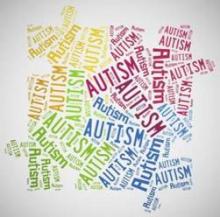SAN DIEGO – Labor induction and augmentation were not associated with an increased likelihood of autism spectrum disorder during childhood in a large cohort study.
While the findings conflict with those of a recently published, large epidemiologic study, they fit with the preponderance of evidence, which refutes an association between labor induction and/or augmentation and autism spectrum disorder (ASD), Dr. Erin Clark reported at the annual Pregnancy Meeting sponsored by the Society for Maternal-Fetal Medicine.
Of the more than 166,000 children in the current cohort, 2,547 (or about 1 in 65) had a diagnosis of ASD. After adjusting for numerous potential confounders related to socioeconomic status, maternal health, pregnancy-related events and conditions, and birth cohort, there were no significant differences found between those with and without ASD with respect to exposure to labor induction and/or augmentation, said Dr. Clark of the University of Utah, Salt Lake City.
The odds ratios compared with no exposure to induction or augmentation were 0.897 for induction with augmentation, 0.959 for induction only, and 0.978 for augmentation only.
The findings were similar among boys and girls with ASD, although about 1 in 45 boys in the cohort and 1 in 130 girls had ASD, figures which are consistent with the known case prevalence for boys versus girls, she said.
“This work supports current recommendations from [the Society for Maternal-Fetal Medicine] and [the American College of Obstetricians and Gynecologists] that recommend against a change in current guidance regarding counseling and indications for, and methods of labor induction and augmentation,” she said.
Dr. Clark and her colleagues performed the epidemiologic analysis using data from the Utah Registry of Autism and Developmental Disabilities (URADD) for the 1998, 2000, 2002, 2004, and 2006 birth cohorts from a four-county surveillance area, and from the Utah Department of Health Vital Records and Statistics.
The registry data represent about 70% of the state’s population, and the vital records and statistics data include information about exposure to induction and/or augmentation and known ASD risk factors.
ASD increased in prevalence by 120% between 2002 and 2010, and the reasons for this are multifactorial. The increase is at least partially due to changes in case ascertainment, but the extent to which legitimate changes in case prevalence have contributed to the increase is unclear and concerning, Dr. Clark said.
“So the hunt for risk factors is on as we seek etiologic clues and possible prevention and treatment strategies,” she said.
When it comes to perinatal risk factors, the data have been conflicting, but because alterations in oxytocin and oxytocin signaling have been linked to autism, labor induction and augmentation are potential risk factors “of great interest and controversy,” Dr. Clark said.
Of nine studies published before 2012 that evaluated the association between induction/augmentation and ASD, one found an association that persisted after controlling for confounders, but a subsequent meta-analysis was negative (Br. J. Psychiatry 2009;195:7-14).
In 2013, a large epidemiologic study showed an association, particularly in boys (JAMA Pediatr. 2013;167:959-66).
The current study was undertaken with these previous studies in mind, Dr. Clark said, noting that the differences in outcomes might be due to differences in population characteristics or methodologic approach, including management of confounding variables.
In response to an audience member who asked if the researchers had controlled for vaccination status, Dr. Clark said vaccination information was not available, but that it likely would not have been included in the analysis regardless as “that association has been completely debunked.”
Dr. Clark reported having no financial disclosures.


